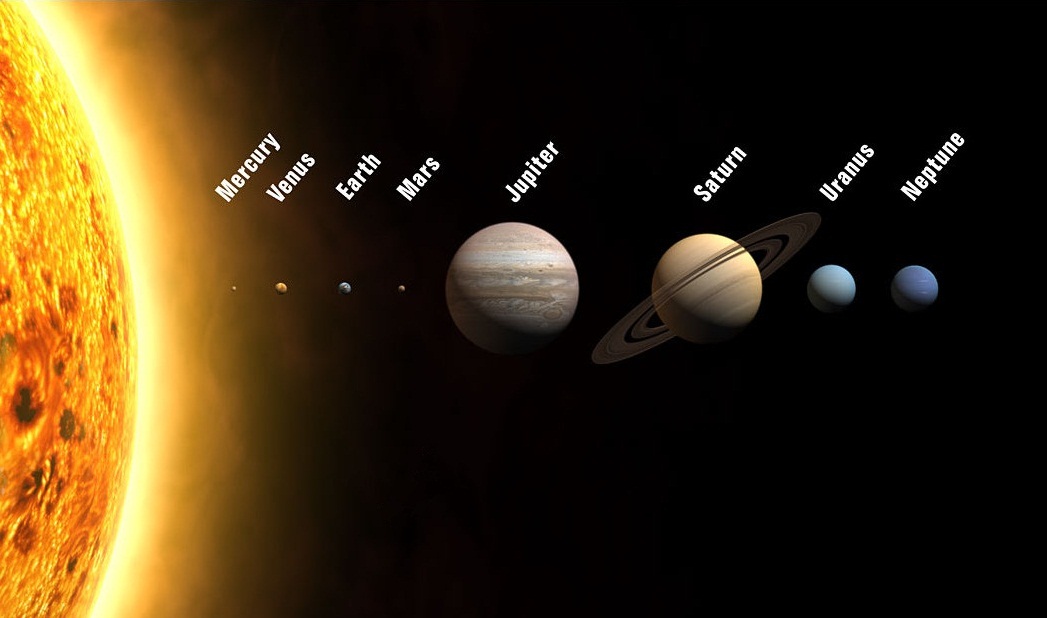
"Planets2013" by WP - Planets2008.jpg. Licensed under CC BY-SA 3.0 via Wikimedia Commons.
(Distance not to scale)
The sun is obviously stupidly massive compared to first 4 planets. Even compared to the outer gas giants, it dwarfs them. Numbers wise, the sun is ~100 times the size of the Earth, ~10 times the size of Jupiter, and ~300 times the size of Mercury (poor little Mercury); but that's only by radius. The sun has a volume 1 million times the volume of earth.
The distances between planets are even more absurd. The first four planets are spaced remarkably evenly every ~50 million km. That's about one planet every 35 suns. Even the sun, as large as it is, is massively dwarfed here. We're not even out to Jupiter though, which is 3.5 times as far away from the sun as Mars is. Neptune is some 7 times farther away than Jupiter is. (or, some 3,200 suns away).
When I actually sat down to work out some sort of scaling for my game, I quickly realized that if I wanted any sort of scale, there's a large incentive to split the solar system up. The differences in size are just too pronounced to keep them on one screen unless I want to ditch the scaling entirely.
The real fun part came when I started looking at some interstellar scales. This is the weird one, because it's just that big, but is never represented well in any sort of scale we can comprehend. This is especially problematic when we start using different notation. I can represent distances within our solar system relatively easily with kilometers. Neptune is only 4.5 billion km away from the sun. Even written out as 4,498,542,600 km it's not too bad.
For interstellar distances we switch from kilometers, a measurement we're fairly familiar with, straight over to light years. The closest star system to ours is Alpha Centauri at ~4.4 light years away. That doesn't sound too bad, does it? There's no million, or even thousand there, and certainly no billion. It can't be that far away, can it? For me, this often leads to thinking "step 1, Mars, step 2 other solar systems". If we can only figure out this space travel thing, the universe is open to us.
But how different is that scale, really? Farthest distance between the Earth and mars is ~400 million km, and here to Alpha Centauri is 4.4 light years. That means the trip to Alpha Centauri is ~100 million times longer than the trip to Mars. That's pretty bad, but doesn't illustrate as well the difference I think. Here's an analogy:
I'm about 2 meters tall. With a good ladder, I can double my effective height to 4 meters. With my eyes up this high, I can reach quite a few places around my house, and it's pretty obvious that with a better ladder I'd be able to reach even the highest points of my house. Yet, there's no real possibility that I'd be able to reach the moon with any sort of ladder. The same problem exists with comparing going to Mars to going to another solar system. The two are fundamentally different beasts, even though they may look similar.
Not to say that we'll never get that far. I can't use a ladder to reach the moon, but we've managed to send many missions there using simple rockets. There's no reason to think that it's impossible to do because we haven't found a way to do so yet. Perhaps some day later there'll be someone contemplating about the differences in scale between galaxies, rather than merely solar systems.
Sounds exciting!
ReplyDelete